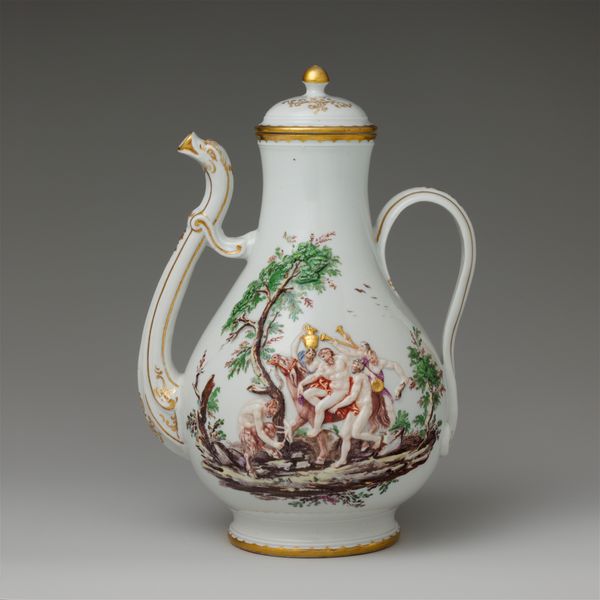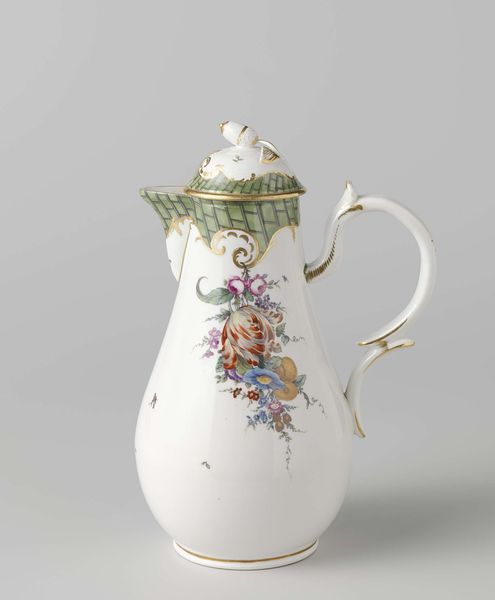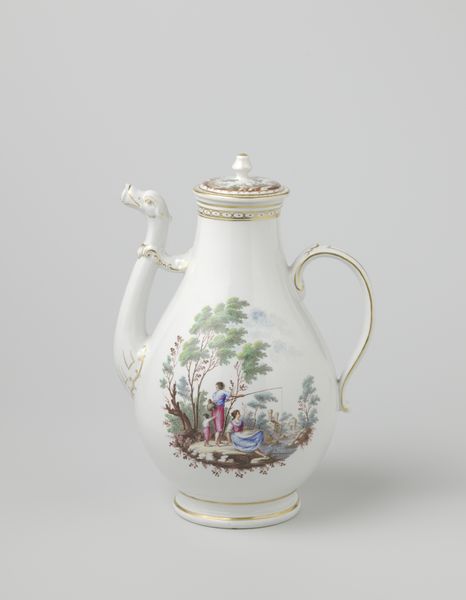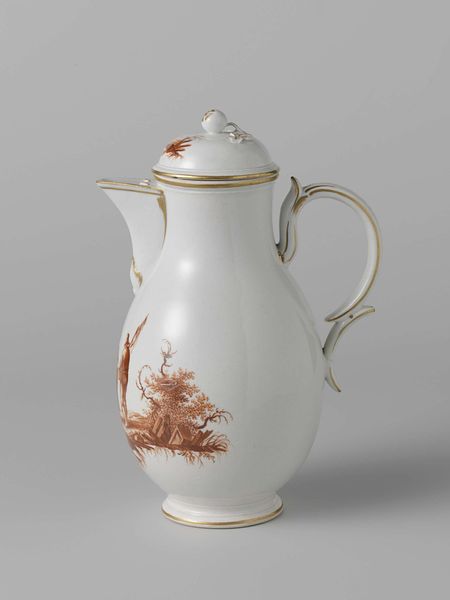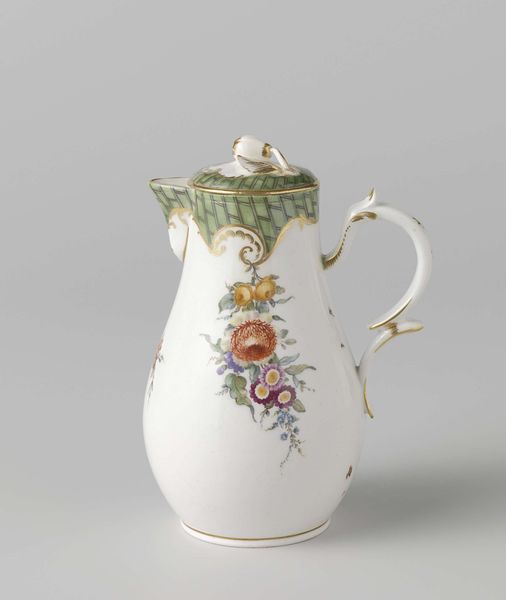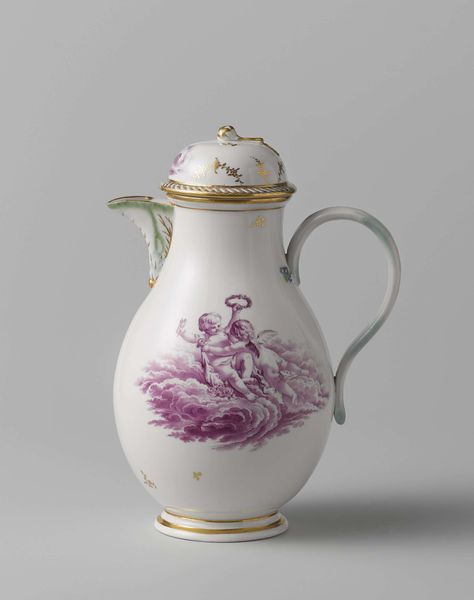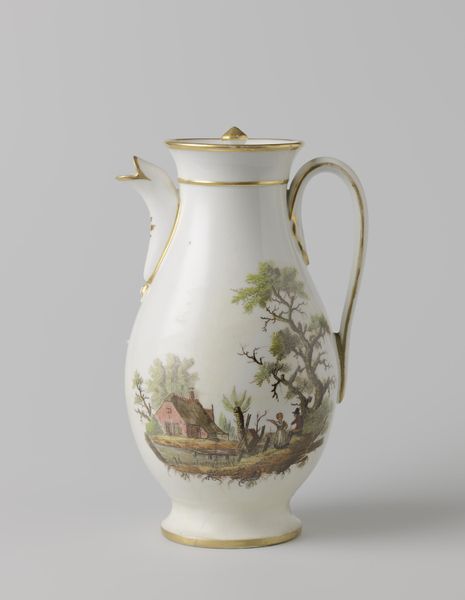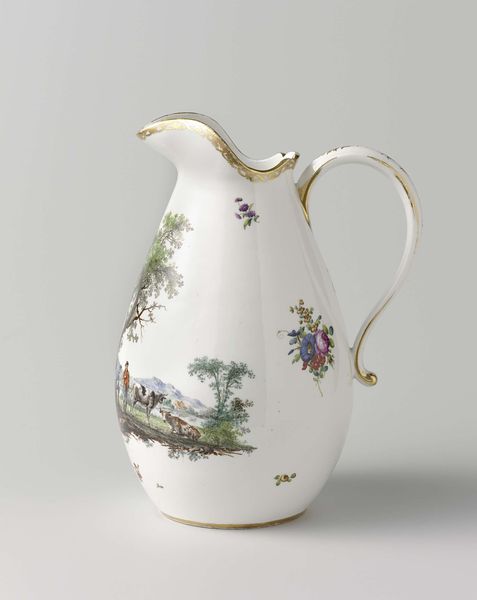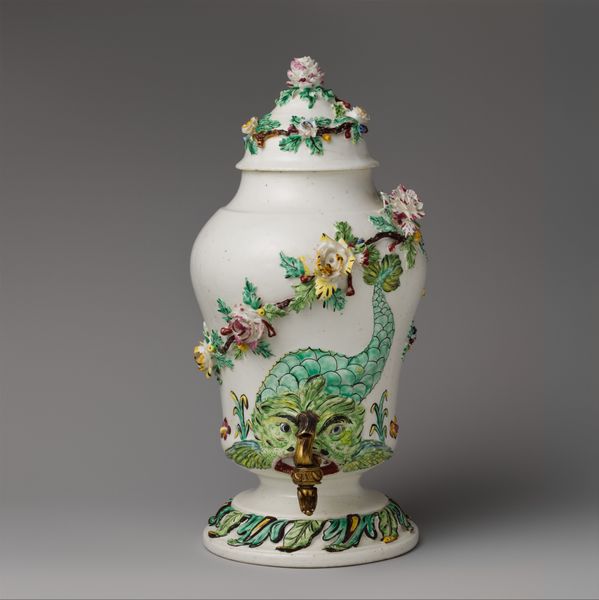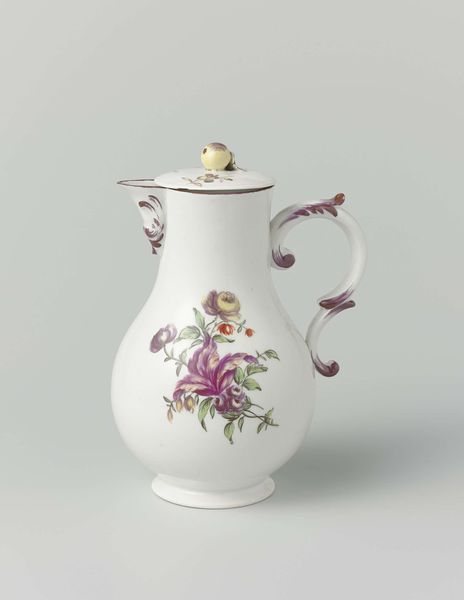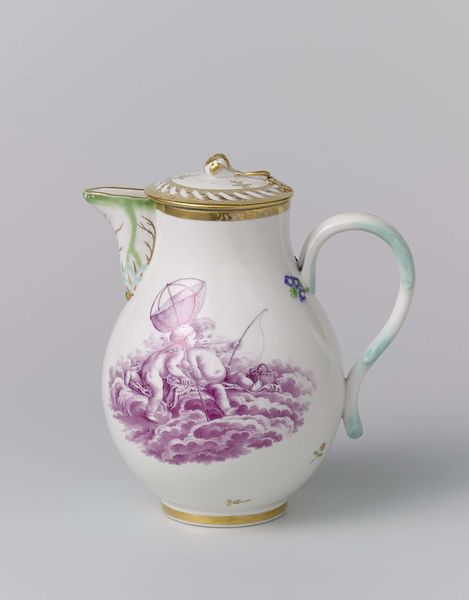
ceramic
#
ceramic
#
ceramic
#
decorative-art
#
rococo
Copyright: Rijks Museum: Open Domain
Curator: Here we have a beautiful example of Dutch Rococo porcelain, a "Coffee Pot" made by the Weesper porseleinfabriek around 1759-1771. Editor: It's rather lovely. It seems both elegant and somehow pastoral. The clean, curving lines contrasted with those little idyllic landscape scenes are rather pleasing to the eye. Curator: The decoration is particularly evocative. These idyllic landscapes reflect a longing for nature and simplicity. Can you detect those tiny pastoral vignettes? Editor: Yes! The tiny landscapes evoke images of pleasure gardens—an Arcadian retreat for elite social gatherings. The use of symmetry in the overall composition is also evident. Note how the spout and handle mirror each other. Curator: The symbolism here is multilayered. This wasn't just about drinking coffee, you know. It also represented a status symbol, a cultural ritual linked to luxury and international trade. Think about the cultural associations coffee held at the time. Editor: Absolutely. And the almost clinical white ceramic as ground emphasizes the images. From a design perspective, notice how the soft curves and embellishments adhere to the Rococo aesthetic. There is an elegance, for sure, but there is also utility of function; form follows function, as it should. Curator: Though, these ornamental forms of porcelain acted as an anchor of memory and status; porcelain and other trade wares were a way for the Netherlands to visually assert itself on a global scale. Drinking from a vessel like this was akin to performing Dutchness. Editor: The careful juxtaposition of unadorned white surfaces against delicate painted decoration lends the work an element of surprise. Such subtle shifts in form contribute to an elegant design strategy. Curator: That's certainly true. A delicate objet d'art meant to broadcast values about taste and sophistication to others. It is nice to find pieces that remind you of certain traditions in life and history. Editor: Precisely! By analyzing formal composition we were able to deduce its role as a carrier of cultural traditions. An impressive confluence of shape and representation, if I may say so myself!
